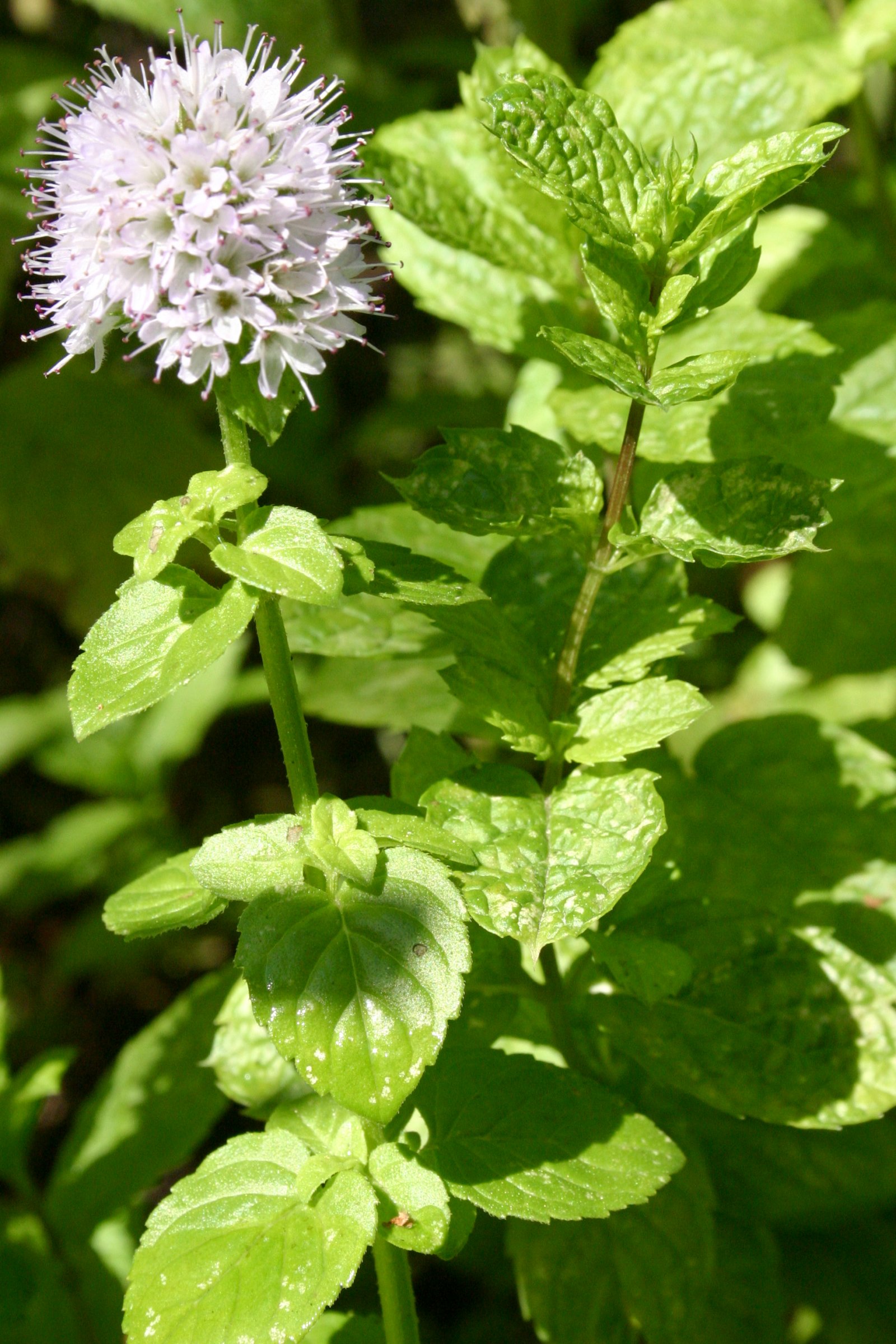

Mint

Mint is a hardy herbaceous perennial with a square stem and tiny mauve flowers in summer. Species range in height from 6 inches to 3 feet. There are several hundred varieties of mint, some of which include pineapple, ginger, peppermint, applemint, curly mint, lemon, and spicata (spearmint) and pennyroyal. Corsican mint makes a splendid ground cover.
How to grow: Plant mint in rich, moist, alkaline soil rich in nutrients. Mint will thrive in partial shade. Thin transplants to 12 inches apart. Mint can be invasive. Plant in containers to restrict root growth. If growing more than one species, remove all flowering stems to avoid cross-pollination. As with most herbs, mint is relatively pest free. However, if rust becomes a problem, dig up the plant and destroy. Mint can be grown as an indoor container plant.
Propagation: Propagate by taking stem or root cuttings. Divide mint in spring or fall. Keep seedlings moist until established.
Harvesting: Pick leaves just before the plant flowers.
Preserving: Dry or freeze individual leaves. Chop leaves and infuse with vinegar or oil.
Culinary uses: Mint is loved and used around the world. Lamb and mint go together. Lebanese tabbouleh includes mint, as well as Tandoori chicken from India. Add mint to iced tea or other beverages, and ice cream. Add fresh leaves to potatoes, new peas, and fruit salads. Mint and chocolate are an unbeatable combination. Various flavors of mint have made chewing gum a national favorite.
Other uses: Try growing mint near roses to deter aphids. Scatter leaves in cupboards to deter ants. Use mint in potpourri and herb bags.
NOTE: Use pennyroyal sparingly. Consult your Doctor.
4116 E. 15th Street
Tulsa, OK 74112-6198
(918)746-3701